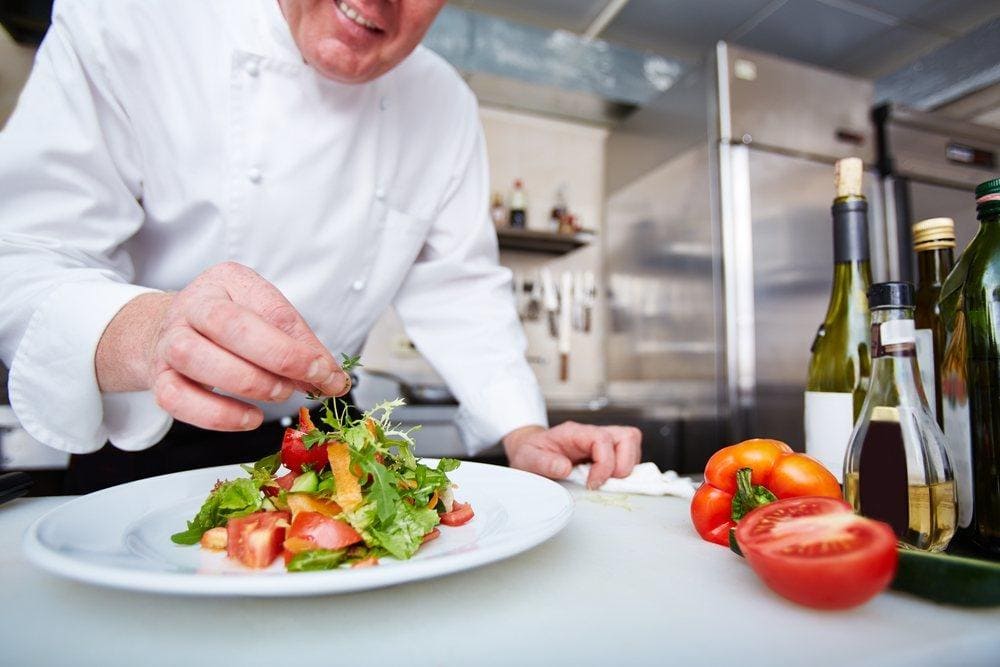The Ultimate Mixed Martial Arts Diet Plan
Weight loss is not about just losing weight - it’s about adopting a lifestyle that supports overall health and performance. A well-structured mixed martial arts diet plan ensures that fighters fuel their bodies for optimal training, recovery, and longevity in the sport. Meal Planning is a critical part of The Fighter’s Nutritional Blueprint: Creating a Combat Arts Ready Body and needs to incorporated into our martial lifestyle to ensure success.

As marital artists, we need to focus on that lifestyle routine as part of our training. You’ll see in this article, we talk much more about self-defense training than competition training.
Some of the planning will help with all day competitions and training routines. How you shop for food dictates the type of foods you eat, but has little other bearing on your competitions and planned events.
But, the reason we talk more about self-defense is that martial arts originated in the defense of our lives and homes. These were skills used at the market and in the fields for safety from thieves and bandits. The whole reason we train is to be safe from the danger that may spring up when we’re least prepared. Losing weight means we can be prepared anywhere to use our skills.
As we plan on incorporating weight loss strategies in our lives, we need to look at our whole lives and how we can save our families from both health problems and attack.
Where to Get Your Best Meals and the Best Foods
If you fail to plan, you plan to fail. Meal planning doesn't have to be planning out every single meal for a week or a month. It can be having a list of potential meals and having the right ingredients on hand. This flexibility allows you to choose what to eat based on your needs and training schedule. A well-balanced diet for martial arts ensures you have the energy, strength, and endurance needed for peak performance. A sample meal plan is below.
Recipes
Cookbooks have all sorts of recipes. You can also find millions of recipes online for every ingredient you can think of. They give you a list of food you need to have on hand, and you can create your grocery list from these recipes.
You should always keep on hand a list of recipes that are your favorites and new ones that strike your fancy. It will help you decide which ingredients you need to purchase to make the meals and give you an easy to reference guide for meal planning.
Some recipes lend themselves to various ethnicities. If it is an ethnicity that’s far different from your own, it may require more intensive planning. That’s okay. Obtain the ingredients you need, and make substi1.60tutions if various specialty spices and vegetables are not available.
Family Favorite Meals
There are some meals that your family loves and continuously requests over and over. Keep those ingredients on hand. That way, you can make it anytime.
The unfortunate part about popular recipes is most of them are not the most healthy. They tend to be things like pizza, pasta dishes, and treats. That's okay. Part of planning out your weight loss strategies and proper nutrition is to make sure that you allow occasional indulgences, as long as they don't offset your normal diet.
If your lifestyle diet (not weight loss diet) does not allow for occasional indulgences, you won’t stick with the diet.
Shopping – A Life & Death Struggle
Most people hate to shop. It's truer in men than in women, but a high number of women hate to shop as well. There are strategies to make this easier.
And, as with everything else, you need to look at your shopping as a tactical exercise. Threats come in all areas and one of the most benign place is the grocery store. For high-impact, an attack midday on a Saturday will provide the highest number of women and children for a body count. Yet, the highest chance of getting caught in a robbery is between 7 and 9 a.m. on a weekday.
Shopping is a Self-Defense Exercise
In the store itself, be aware of how your senses and behaviors are manipulated. They know if they want to sell high sugar foods, to place it at the 3’ level, right in line with a child’s viewing range. Expensive items typically are 1/3 and 2/3 down the length of the aisle and sit at the 5’6” to 5’8” level, so most women need to look slightly up.
The healthiest foods, and the ones with the lowest profit margin sit on the very top and very bottom shelves. Normally, unhealthier options sit right next to or just the next shelf up/down, within easier reach.
Organic options tend to be at the very end of the aisles, while local options tend to be on the top shelf with minimal viewing space. Because of these little tricks, you’ll need to pay more attention to the items you are purchasing.

This leaves less attention to a dangerous situation, if it arises. Be conscious of how you operate so you aren’t caught unaware.
Creating A List
Creating a list and knowing what you need helps get you in and out faster and helps you avoid temptation purchases of candy, chips, ice cream, and other foods that help make you gain weight. However, having a list may distract you from being present in the moment and observing the world around you. A threat could sneak up on you because you’re so focused on the list and the next item.
In the nutritional world, especially when it comes to weight loss, having a list is your best bet for helping you lose weight. A list is created from the recipes you plan to try for the coming week. By having a plan and sticking to it, you avoid having temptation food in the house, and you stick to your commitment of losing weight and eating healthy meals.
Want to Get Meal Planning Tips & Hacks
To Build a Combat Ready Body Poised for Any Challenge?
You need to read the ingredient label. Food labels are highly misleading, relying on many of the outdated diet advice that we just disproved above. Calories, fat, and sugar tend to be the big things people look for but are entirely misleading.
The ingredient list is a much better way to determine if your food is good or not. Foods with a short list of easily recognizable foods are better and healthier. If the processed food read like a chemistry textbook, it's not healthy for you.
The worst ingredients you want to avoid (and why):
Location Makes A Difference
Your local farmers market is the best place to get local and fresh fruits and vegetables. Everything you get will be fresher and most likely safer. Local farmers tend not to use as many chemicals on their field as large commercial growers. Small local farmers also depend on their food being higher quality, rather than just producing quantity or stuff that holds up during the week-long trip across the country.
In the US, there are registered farmer’s markets in every large city and can be found within 30 miles of you, according to the Farmer’s Market association. Most people live within 10 miles of a farmer’s market. And, if you are in a large city, you may have multiple ones to choose from.
Most farmer’s markets operate 1 day per week, although large ones may be open daily. This is where recipe planning helps prepare you for your shopping trips.
A bonus of the local farmers market is the price. Because they don't have to go through transportation and storage costs, their food tends to be cheaper.
A few questions to ask your farmer to understand where your food is coming from & how responsible the farmer is:
This is very rare at a farmer’s market and you really don’t need to ask unless you are buying soy, wheat, corn, or other large scale crops.
Overall, you get a better value by choosing quality over quantity. And, farmer’s markets are safer than grocery stores. Most farmers and farm hands tend to be strong people. Chances are, the farmer you're purchasing lush, red tomatoes from has at least one knife and probably a gun concealed on his or her person.
The smarter bad guys, the ones who plant attacks, notice. The dumb ones, or the most dangerous, may try something anyway. They're dumb enough not to know they're in a highly armed and self-defense aware area, but will still try and act irrationally, making them more dangerous.
Farmers markets are one of the safest places to be. Spending time looking at produce and planning good meals is something you should do at the farmers market.

If you aren’t purchasing your produce from a farmer’s market, check out the bar code on the produce. Produce will have a 4 or 5 digit bar code. If you see only 4 digits, the produce was conventionally grown by large factory farms and most likely has layers of pesticide residue on it.
A 5 digit code starting with 8 means GMO. Because of the patent technology of GMOs to resist chemical application, they almost certainly have layers of pesticide and herbicide residues and may incorporate unsavory genetic material. A 5 digit code beginning with 9 is organic. The most likely do not have any residues, but may come from far away. The chances of having an imperfect fruit, insects, dirt, and soft spots is high.
How to Meal Prep for a Mixed Martial Arts Diet Plan
Meal prep seems like extra work especially if you’re used to pre-packaged meals. However as an MMA fighter, your diet directly impacts your performance, endurance, and recovery. You can’t expect better results in the cage if you continue the same eating habits that led to weight gain or sluggishness.
While there are times to eat out, preparing meals at home saves money and gives you complete control over your nutrition. Proper meal planning ensures you're fueling your body with the right balance of proteins, carbs, and fats to sustain intense training sessions and aid recovery. Below are examples of meal structures to help you optimize your diet for peak performance
Breakfast
Stick to higher protein, lower carb meals. This includes eggs, oatmeal, and fruits and vegetables. Avoid pancakes, waffles, breads, and cereals.
Lunch
Some carbs, but mostly vegetables with some protein. Salads, soups, and hearty meals work well here. If you are out, such as at a day job, leftovers from the night before are great! Avoid pre-packaged weight control meals.
Snacks
Mostly fat and vegetable based. Avoid candy, flour based treats, and sugary foods. Try nuts, seeds, yogurt, fruit, and jerky.
Dinner
Keep to a moderate protein meal with lots of vegetables and less carbs. You don’t want to go heavy on this meal and make sure you eat at least 4 hours before bed. Skip pasta dishes at night.
A final tip about meals: If you’re training hard, these might seem like small meals.
If you’re training hard, these portions may seem small. That’s okay—adjust your serving sizes to match your training intensity. Prioritize balanced meals by increasing your protein, healthy fats, and fiber-rich veggies rather than just loading up on extra carbs or protein alone. Proper meal composition ensures better endurance, faster recovery, and optimal weight management for MMA competition.
Time Saving Tips
Crockpots or Slow Cookers
Crockpot or slow cookers save time. Many meals can be made in one pot and left to simmer all day. A good and hot dinner is ready when you get home without much work.
Prepare your slow cooker or crockpot the night before. Use the recipes you find online or in cookbooks to guide you. Or you can put in a frozen piece of meat, a bunch of vegetables, and a flavoring for a meal. Salad dressing, marinade, and lots of herbs and spices all make great flavors. Garlic and onion are very popular and very healthy for your heart.
These one-pot meals are great for day long seminars and competitions, too. In the amateur kickboxing world, you’ll be lucky to find any kind of food offered.
Prepping a thick stew or easy to eat food in a slow cooker can help provide healthy food all day for multiple people.

The Ironman competitors have some of the most grueling training and getting in good meals can be difficult. Slow cookers can be a saving grace. Their first and primary consideration is a good diet rich in fruits and vegetables. Although, intermittent fasting can help prepare you for these times.
Planning It Out
We talked earlier on writing out your grocery list for shopping. This once-a-week task saves you time during the week by knowing exactly what you will be eating during the week.

You can writing your list on a notepad, or use some of the great apps. Big names, such as Food Netword, Allrecipes, and Yummly work, but are a bit cumbersome. The smaller, naturally focused apps of BigOven, SideChef, and Weber
Grills offer free apps that let you choose your recipes and get advice. They feature easy recipes, most designed for new and budding cooks. There are even feature to select fast cooking recipes.
If you really want to set a schedule for what you are cooking and when you need to cook it, check out the free app FoodPlanner. You can go with the next step and pay for the apps MealPlan, Paprika, and MealBoard. These paid apps can create your schedule, grocery list, and even keep track of what you have in the house and what you need to buy.
Leftovers
One way to cut your cooking and prepping in half is to use leftovers. When you make a meal, make enough for lunch the next day and extra meals. You can freeze most soups, stews, slow cooker meals, and baked items for up to a month without losing quality. Then, all you need to do is heat up the food.
Packet Cooking
Cooking in foil or parchment paper is easy, clean, and quick. Single meals can be hot and fresh within 30 minutes. Start the night before or early that morning and preparing.
Add a piece of meat, lots of vegetables, a flavoring sauce, and a fat to a foil or parchment paper packet. Fold the ends so there is no leaks, but at least one vent. Store the packet in the refrigerator until you get home. Once you are home, take the package and place in the over, turn the oven on hot, and clean up from your day.
Within 20-40 minutes (depending on the thickness of the meat), your meal will be hot and fresh. You can cook multiple packets; just remember it takes longer.
Portioning Out Fresh Foods
When you get fresh fruits and vegetables, you have two choices. First, you can keep it longer by leaving it whole. This means when you prep your food, you’ll need to cut up the fresh vegetable. Secondly, you can take the time to dice it up immediately and portion it out into smaller containers. This reduces your prep time later, but the food won’t last as long.
Dining Out
During seminars, most people dine out. In the US, the average couple dines out twice a week. You can apply all the principles for losing weight and getting proper nutrition to any meal on the menu. Most places list out the majority of ingredients to help people decide what they want to eat. And avoid potential allergens. Because of all of the popular diets, most restaurants are very accustomed to substituting ingredients. It’s quite normal for a restaurant to substitute vegetables for pasta. All you have to do is ask.
When you do dine out, be as aware of your environment as you are of your meal. Be sure to know where the exits are, where’s the most likely entry point for someone looking for trouble, and any potential weapons that may be used against you or that you may use yourself.

One popular downside to eating out is the high amount of salt and spicy food people choose. Salt isn’t so much of a problem, but using spicy food could cause distraction.
Although ginger, cayenne, turmeric, and garlic are all incredibly healthy and beneficial for you, they can cause your eyes to water, your throat to burn, and profuse sweating. Be aware of these choices and what it might mean if you need to use your skills.
The most popular apps Yelp, FourSquare, HappyCow and UrbanSpoon keep track of all the local restaurants and gives you up-to-date info on the menu and reviews.
Other apps focus on different types of restaurants. Locavore, FoodCommunity, and Clean Plates focus on local, healthy, and specialty restaurants. The only downside of these apps is the community. In larger populated areas, these restaurants are more prevalent and the people more apt to use the apps. In smaller communities, or rural areas, you might not find any restaurants on these apps. It’s not because they don’t exist, but they just aren’t reviewed yet.
Choosing a Location
The first step to eating out is choosing a good location. Typically, smaller, family-owned restaurants have the widest selection of fruits and vegetables, fresh food, and available substitutions. Smaller, family-owned restaurants typically are situated in better parts of town, which makes them safer.
The downside to the family-owned restaurants is speed. Because many of them make their food to order, it takes a little bit longer.

Frequently Asked Questions
What is Meal Planning?
Meal planning for combat athletes involves strategically organizing and preparing meals in advance to support their training, performance, and overall health. It ensures proper nutrient intake, portion control, and time efficiency in meal preparation.
What are the Five Principles of Meal Planning?
The five principles of meal planning for combat athletes include incorporating a variety of nutrient-dense foods, balancing macronutrients to meet their energy needs, controlling portion sizes for weight management, considering individual dietary requirements and training goals, and maintaining consistency in healthy eating habits.
How to Meal Plan for the Week
To meal plan for the week as a combat athlete, select recipes that align with your training and performance goals. Create a detailed shopping list, ensuring you have all the necessary ingredients, and dedicate time for meal preparation in advance. Consider using batch cooking or meal prepping techniques to save time and stay on track.
How to Meal Plan for Weight Loss
To meal plan for weight loss as a combat athlete, focus on creating a calorie deficit by selecting lean protein sources, whole grains, and plenty of vegetables. Control portion sizes, limit processed foods and sugary beverages, and prioritize nutrient-dense meals to support training and recovery.
How to Meal Plan on a Budget
When meal planning on a budget as a combat athlete, focus on affordable protein sources such as eggs, canned tuna, or chicken. Opt for cost-effective options like seasonal produce, whole grains, and legumes. Buy in bulk, use leftovers creatively, and consider plant-based meals as budget-friendly alternatives.
